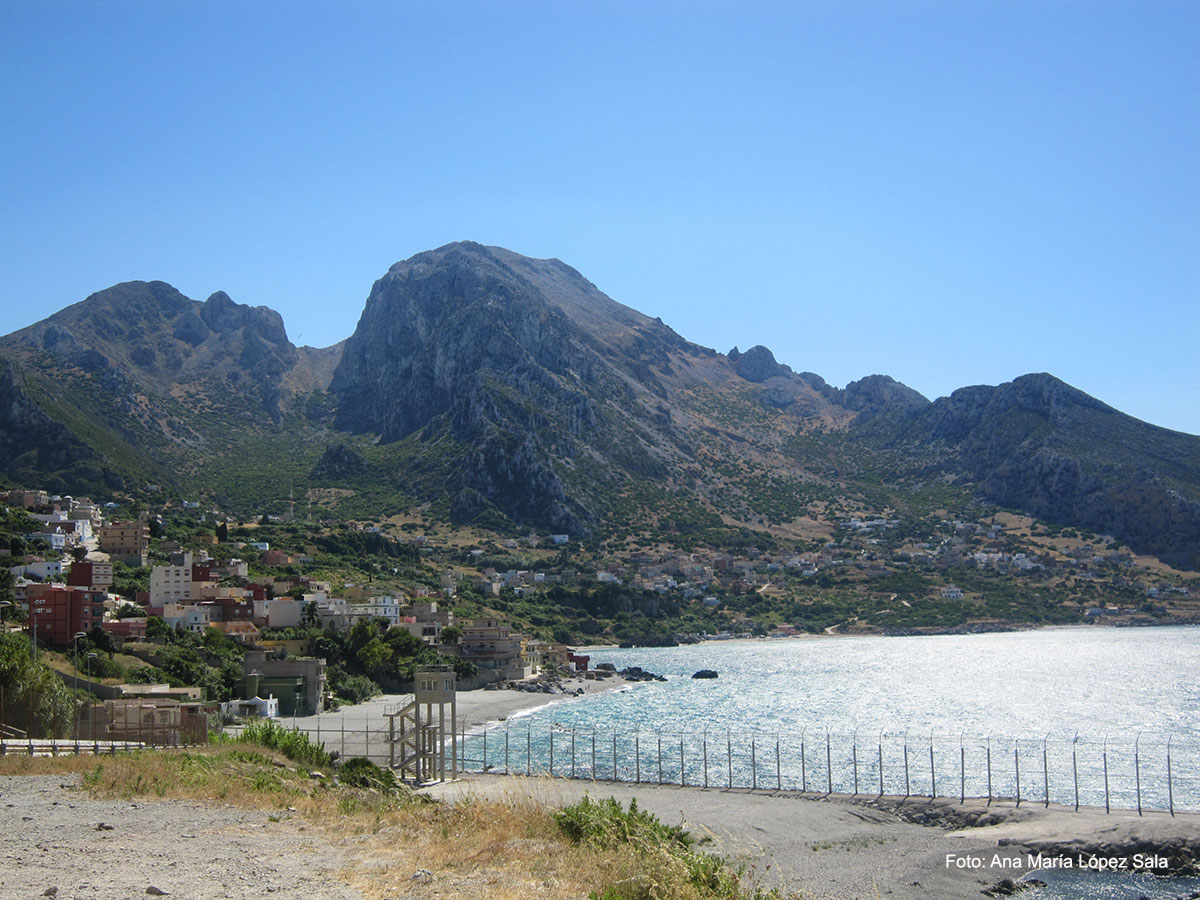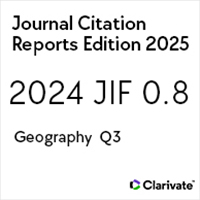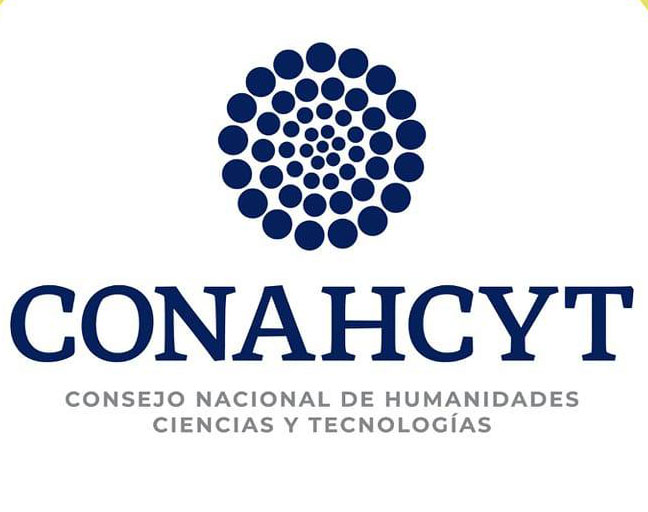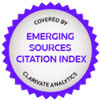Seeking protection at the gates of Europe: refugees, labeling and dissuasion practices at the southern Spanish borders
En busca de protección a las puertas de Europa: refugiados, etiquetado y prácticas disuasorias en la frontera sur española
https://doi.org/10.21670/ref.2006048
Keywords:
Refugees, labeling, dissuasion paradigm, border, migration control, SpainAbstract
Based on an analysis on the practices that have become generalized over the past few decades to limit refugees from entering the territory through what has been dominated the dissuasion paradigm, this article uses the literature on labeling to research how asylum has been managed at Spain’s southern border over the past three decades. The analysis is based in 34 in-depth interviews conducted between 2016 and 2019 in Madrid, Cádiz, Ceuta and Melilla to members of different public institutions and social organizations involved in the implementation of refugee policies at the Southern Spanish border. The “labeling” of African immigrants as labor migrants (or as “bogus” asylum seekers) has shaped the refugee policies at this border resulting in practices of contention and dissuasion of the flows and restrictions in the access to the Spanish protection system under the priority of the logic of control.Resumen
A partir de un análisis que subraya las prácticas de contención del acceso de los refugiados desde el denominado paradigma disuasorio, este artículo usa la literatura del etiquetaje para investigar la gestión del refugio en la frontera sur española a lo largo de las últimas tres décadas. Además de detenernos en algunos elementos del marco regulatorio del refugio en España y su evolución, el análisis presentado se basa en 34 entrevistas en profundidad semiestructuradas realizadas entre 2016 y 2019 en Madrid, Cádiz, Ceuta y Melilla a diferentes actores públicos y miembros de organizaciones sociales, nacionales e internacionales, implicados en la gestión del refugio en España. Las conclusiones del análisis indican que el etiquetado de la inmigración africana como una inmigración exclusivamente laboral ha moldeado la gestión política del refugio en la frontera sur española a través de prácticas que han impedido, limitado y disuadido el acceso de potenciales solicitantes de asilo al sistema español de protección internacional. Por ello la gestión del refugio ha quedado ampliamente supeditada al control migratorio.References
Agier, M. (2013). Managing the Undesirables. Refugee Camps and Humanitarian Government. Policy.
Amnesty International. (2005, 19 de junio). Spain: The Southern Border. The State Turns its Back on the Human Rights of Refugees and Migrants (AI Index: EUR 41/008/2005).
Amnistía Internacional. (2016, 29 de noviembre). Ceuta y Melilla. Un territorio sin derechos para personas migrantes y refugiadas.
Alto Comisionado de las Naciones Unidas para los Refugiados (ACNUR). (2009, abril). Protección de los refugiados y migración internacional: revisión del papel de ACNUR en las Islas Canarias (España). Autor.
Apostolova, R. (2015, 14 de septiembre). Of Refugees and Migrants: Stigma, Politics, and Boundary Work at the Borders of Europe. American Sociological Association, culture section web site and newsletter. https://asaculturesection.org/2015/09/14/of-refugees-and-migrants-stigma-politics-and-boundary-work-at-the-borders-of-europe/
Becker, M. (2014). The Discourse About Legal Protection for Environmental Refugees: Reconstructing Categories - Rethinking Processes. En F. Gesing, J. Herbeck & S. Klepp (Eds.), Denaturalising Climate Change: Migration, Mobilities and Space (pp. 77–85). Universidad de Bremen.
Bivand Erdal, M. & Oeppen, C. (2018). Forced to leave? the discursive and analytical significance of describing migration as forced and voluntary. Journal of Ethnic and Migration Studies, 44(6), 981-998. DOI: https://doi.org/10.1080/1369183X.2017.1384149
Bodelón, G. (1993). La Oficina de Asilo y Refugio (OAR). Revista Minusval, 87, 47-48.
Carrera, S. (2020, marzo). The Strasbourg Court Judgement N.D. and N.T. v Spain. A Carte Blanche to Push Backs at EU External Borders? EUI Working Papers. DOI: https://doi.org/10.2139/ssrn.3634515
Casolari, F. (2015). The EU’s hotspot approach to managing the migration crisis: a blind spot for international responsibility? The Italian Yearbook of International Law, 25, 109-134. DOI: https://doi.org/10.1163/22116133-90000109a
Comisión Española de Ayuda al Refugiado (CEAR). (2007). La situación de los refugiados en España. Entimema.
Comisión Española de Ayuda al Refugiado (CEAR). (2012). Informe 2012. La situación de las personas refugiadas en España. Madrid.
Comisión Española de Ayuda al Refugiado (CEAR). (2018). Informe 2018. Las personas refugiadas en España y en Europa. Madrid. https://www.cear.es/wp-content/uploads/2018/06/Informe-CEAR-2018.pdf
Comisión Española de Ayuda al Refugiado (CEAR). (2019). Informe 2019. Las personas refugiadas en España y en Europa. Madrid. https://www.cear.es/wp-content/uploads/2019/07/INFORME_CEAR_2019.pdf
Collyer, M. (2019). From preventive to repressive: the changing use of development and humanitarism to control migration. En K. Mitchell, R. Jones & J. Flury (Eds.), Critical Geographies of Migration (pp. 170-181). Edward Elgar. DOI: https://doi.org/10.4337/9781786436030.00022
Crawley, H. & Skleparis, D. (2018). Refugees, migrants, neither, both: categorical fetishism and the politics of bounding in Europe’s ‘migration crisis’. Journal of Ethnic and Migration Studies, 44(1), 48-64. DOI: https://doi.org/10.1080/1369183X.2017.1348224
Defensor del Pueblo. (2005). Informe sobre Asistencia Jurídica de los Extranjeros en España. Autor.
Defensor del Pueblo. (2013). Informe anual 2013 y debates en las Cortes Generales. Autor. https://www.defensordelpueblo.es/wp-content/uploads/2015/05/2013_Informe_Anual_Vol_I_Informe_2013.pdf
Defensor del Pueblo. (2016). Estudio sobre el asilo en España. La protección internacional y los recursos de acogida del sistema. Autor.
Escobar-Hernández, C. (1992, enero). Asylum and refugee status in Spain. International Journal of Refugee Law, 4(1), 57-70. DOI: https://doi.org/10.1093/ijrl/4.1.57
Espada Ramos, M. L. & Moya Escudero, M. (1985). La ley reguladora del asilo y la condición de refugiado del 26 de marzo de 1984: ¿nacionalismo o internacionalismo? Revista de Estudios Internacionales 6(1), 73-110.
European Commission against Racism and Intolerance (ECRI). (2005, 14 de junio). Tercer Informe sobre España. https://rm.coe.int/third-report-on-spain-spanish-translation-/16808b56c5
Ferrer-Gallardo, X. (2008). The Spanish-Moroccan border complex. Processes of geopolitical, functional and symbolic rebordering. Political Geography, 27(3), 301-321. DOI: https://doi.org/10.1016/j.polgeo.2007.12.004
Ferrer-Gallardo, X. & Gabrielli, L. (2018). Estados de excepción en la excepción del Estado. Ceuta y Melilla. Icaria.
Fitzgerald, D. (2019). Refuge Beyond Reach: How Rich Democracies Repel Asylum Seekers. Oxford University Press. DOI: https://doi.org/10.1093/oso/9780190874155.001.0001
Fullerton, M. (2005). Inadmissible in Iberia: The fate of asylum seekers in Spain and Portugal. International Journal of Refugee Law, 17(4), 659-687. DOI: https://doi.org/10.1093/ijrl/eei039
Gammeltoft-Hansen, T. (2011a). Access to Asylum. International Refugee Law and the Globalisation of Migration Control. Cambridge University Press.
Gammeltoft-Hansen, T. (2011b). Outsourcing asylum: The advent of “protection lite”. En L. Bialasewitcz (Ed.), Europe in the World: EU Geopolitics and the Making of European Space (pp. 129-140). Ashgate. DOI: https://doi.org/10.4324/9781315580838-7
Gammeltoft-Hansen, T. & Tan, N. (2017). The end of the deterrence paradigm? Future directions for global refugee policy. Journal of Migration and Human Security, 5(1), 28-56. DOI: https://doi.org/10.1177/233150241700500103
Gammeltoft-Hansen, T. & Vedsted-Hansen, J. (Eds.). (2016). Human Rights and the Dark Side of Globalisation. Transnational Law Enforcement and Migration Control. Routledge. DOI: https://doi.org/10.4324/9781315408262
Garcés-Mascareñas, B. (2019). Ser o no ser. Deficiencias en el sistema estatal de acogida. Notes Internacionals CIDOB, 214, 1-5.
Garcés-Mascarenas, B. & Moreno-Amador, G. M. (2019). The multilevel governance of refugee reception policies in Spain. CEASEVAL Research on the Common European Asylum System, (18). http://ceaseval.eu/publications/WP3_Spain.pdf.
García-Mahamut, R. & Galparsoro, J. (2010). Régimen Jurídico del Derecho de Asilo en la Ley 12/2009. Centro de Estudios Políticos y Constitucionales.
Gil-Bazo, M. T. (1998). The role of Spain as a gateway to the Schengen Area. Changes in the asylum law and their implications for human rights. International Journal of Refugee Law, 10(1,2), 214-229. DOI: https://doi.org/10.1093/ijrl/10.1-2.214
Giuffré, M & Moreno-Lax, V. (2017). The Raise of Consensual Containment: From Contactless Control to Contactless Responsability for Forced Migration Flows. En S. Juss (Ed.), Research Handbook on International Refugee Law (pp. 82-108). Edward Elgar. DOI: https://doi.org/10.4337/9780857932815.00014
Godenau, D. (2014). Irregular maritime immigration in the Canary Islands: Externalization and communautarisation in the social construction of borders. Journal of Immigrant and Refugee Studies, 12(2), 123-142. DOI: https://doi.org/10.1080/15562948.2014.893384
Godenau, D. & López-Sala, A. (2016). Multi-Layered Migration Deterrence and Technology in Spanish Maritime Border Management, Journal of Borderland Studies, 31(2), 151-169. DOI: https://doi.org/10.1080/08865655.2016.1174602
González-García, J. V. (2015). Expulsiones “en caliente”, devoluciones y petición de asilo en Ceuta y Melilla, Revista de Administración Pública, 196, 309-329.
Hathaway, J. (1992). The Emerging Politics of Non-Entrée. Refugees, 91, 40- 41.
Hathaway, J. & Gammeltoft-Hansen, T. (2015). Non-refoulement in a world of cooperative deterrence. Columbia Journal of Transnational Law, 53(2), 235-285. DOI: https://doi.org/10.2139/ssrn.2479511
Hirsch, A. L. (2017). The Borders Beyond the Border: Australia’s Extraterritorial Migration Controls. Refugee Survey Quarterly, 36(3), 48-80. DOI: https://doi.org/10.1093/rsq/hdx008
Iglesias, J. & Estrada, C. (2018). Birds of passage? La integración social de la población refugiada en España. Iberoamerican Journal of Development Studies, 7(1), 144-167. https://doi.org/10.26754/ojs_ried/ijds.279 DOI: https://doi.org/10.26754/ojs_ried/ijds.279
Iglesias, J., Urrutia, G., Buades, J., Estrada, C. & Vicente, T. (2018). ¿Acoger sin integrar? El sistema de acogida y las condiciones de integración de personas solicitantes y beneficiarias de protección internacional en España. Universidad Pontificia de Comillas/Servicio Jesuita a los Refugiados/Universidad de Deusto.
Izquierdo, A. (2001). Panorama de la inmigración en España al alba del siglo XXI. Mediterráneo Económico, 1, 247-264.
Izquierdo, A. (2004). Cambios en la inmigración a resueltas de la política restrictiva del gobierno español (The Center for Comparative Immigration Studies University of California). Working Paper 109.
Izquierdo, A., López-Lera, D. & Martínez-Buján, R. (2003). The favorites of the twenty-first century: Latin American immigration in Spain. Studi Emigrazione, (149), 98-124.
Janmyr, M. & Mourad, L. (2018). Modes of ordering: labelling, classification and categorization in Lebanon’s refugee response. Journal of Refugee Studies, 31(4), 544-565. https://doi.org/10.1093/jrs/fex042 DOI: https://doi.org/10.1093/jrs/fex042
Jubany, O. (2002). The state of welfare for asylum seekers and refugees in Spain. Critical Social Policy, 22(3), 415-435. DOI: https://doi.org/10.1177/026101830202200303
Jubany, O. (2011). Constructing truths in a culture of disbelief. Understanding asylum screening from within. International Sociology, 26(1), 74-94. DOI: https://doi.org/10.1177/0268580910380978
Leach, M. & Zamora, A. (2006). Illegals/Ilegales: Comparing antiimmigrant/anti-refugees discourses in Australia and Spain. Journal of Iberian and Latin American Research, 12(1), 51-64. DOI: https://doi.org/10.1080/13260219.2006.10426842
Ley 9/1994 de 19 de mayo, reguladora del derecho de asilo y de la condición de refugiado. (1994). Boletín Oficial del Estado nº 122, 23 de mayo.
López-Sala, A. (2015a). Exploring dissuasion as a (geo)political instrument in irregular migration control at the southern Spanish maritime border. Geopolitics, 20(3), 513-534. DOI: https://doi.org/10.1080/14650045.2015.1025384
López-Sala, A. (2015b). La inmigración irregular en Ceuta y Melilla en 2014. Prácticas de control y debate público. En J. Arango, D. Moya, J. Oliver & E. Sánchez-Montijano (Eds.), Flujos cambiantes, atonía institucional. Anuario de la inmigración en España (pp. 170-191). CIDOB.
López-Sala, A. (2020). Keeping up appearances. Dubious legality and migration control at the peripheral borders of Europe. The cases of Ceuta and Melilla. En S. Carrera & M. Stefan (Eds.), Fundamental Rights Challenges in Border Controls and Expulsion of Irregular Immigrants in the European Union (pp. 25-42). Routledge. DOI: https://doi.org/10.4324/9780429203275-3
López-Sala, A. & Godenau, D. (2016). Integrated border management and irregular migration at the South European-North African border: The case of Spain. En R. Bossong & H. Carrapico (Eds.). EU Borders and Shifting Internal Security: Technology, Externalization and Accountability (pp. 81-100). Springer. DOI: https://doi.org/10.1007/978-3-319-17560-7_5
López-Sala, A. & Godenau, D. (Coords.). (2017a). Estados de contención, Estados de detención. El control de la inmigración irregular en España. Anthropos.
López-Sala, A. & Godenau, D. (2017b). Controlling irregular immigration at the European union’s southern maritime border. An emerging system driven by “migration emergencies”. Journal of Mediterranean Knowledge, 2(1), 17-35
Martínez-Escamilla, M. (2017). Fronteras sin derechos. Las “devoluciones en caliente”. En A. López-Sala & D. Godenau (Eds.), Estados de contención, Estados de detención. El control de la inmigración irregular en España (pp. 54-74). Anthropos.
McFadyen, G. (2016). The language of labelling and the politics of hospitality in the British asylum system. The British Journal of Politics and International Relations, 18(3), 599-617. DOI: https://doi.org/10.1177/1369148116631281
McMahon, S. & Sigona, N. (2018). Navigating the Central Mediterranean in a Time of ‘Crisis’: Disentangling Migration Governance and Migrant Journeys. Sociology, 52(3), 497-514. DOI: https://doi.org/10.1177/0038038518762082
Moncrieffe, J. (2007). Labelling, power and accountability: how and why “our” categories matter. En J. Moncrieffe & R. Eyben (Eds.), The Power of Labelling. How People are Categorized and Why it Matters (pp. 1-17). Earthscan.
Pérez-Sola, N. (2011). El derecho de asilo y la condición de refugiado. Balance de 26 años de desarrollos legislativos. Derechos y Libertades, 15(25), 269-308.
Sajjad, T. (2018). What’s in a name? ‘Refugees’, ‘migrants’ and the politics of labelling. Race and Class, 60(2), 40-62. DOI: https://doi.org/10.1177/0306396818793582
Sánchez-Legido, A. (2009). Entre la obsesión por la seguridad y la lucha contra la inmigración irregular. A propósito de la nueva Ley de Asilo. Revista Electrónica de Estudios Internacionales, 18, 1-32.
Sánchez-Tomas, J. (2018). Las “devoluciones en caliente” en el Tribunal Europeo de Derechos Humanos, Revista Española de Derecho Europeo, 65, 101-135.
Santaolaya, P. (2006). El sistema común de asilo y su recepción en España. Revista de Derecho Migratorio y Extranjería, 12, 83-89.
Sigona, N. (2017). The contested politics of naming in Europe’s “refugee crisis”. Ethnic and Racial Studies, 41(3), 456-460. DOI: https://doi.org/10.1080/01419870.2018.1388423
Solanes, A. (2014). Derechos Humanos y Asilo. Sobre las deficiencias del SECA y la regulación jurídica española. Anuario Facultad de Derecho-Universidad de Alcalá, 7, 181-210.
Solanes, A. (2017). Contra la normalización de la ilegalidad. La protección judicial de los extranjeros frente a las expulsiones colectivas y las devoluciones “en caliente”. Cuadernos Electrónicos de Filosofía del Derecho, 36, 195-225. https://doi.org/10.7203/CEFD.36.11269 DOI: https://doi.org/10.7203/CEFD.36.11269
Stepputat, F. & Nyberg-Sorensen, N. (2014). Sociology and Forced Migration. En E. Fiddian-Qasmiyeh, G. Loescher, K. Long & N. Sigona (Eds.), The Oxford Handbook of Refugee and Forced Migration Studies (pp. 86-98). Oxford University Press.
United Nations General Assembly. (2013). Report of the special rapporteur on contemporary forms of racism, racial discrimination, xenophobia and related intolerance, Mutuma Ruteere, A/HRC/23/56/Add.2
Valles, M. (2016). ¿Vallas al asilo? Apuntes sobre el sistema de protección en España. Anuario CIDOB de la Inmigración, 226-245 DOI: https://doi.org/10.24241/AnuarioCIDOBInmi.2016.226
Vedsted-Hansen, J. (1999). Europe’s response to the arrival of asylum seekers: refugee protection and immigration control. UNHCR.
Vives, L. (2011). White Europe: an alternative reading of the Southern EU border. Geopoliticas, 2(1), 51-70.
Vradis, A., Papada, E., Painter, J. & Papoutsi, A. (2019). New Borders. Hotspots and the European Migration Regime. Pluto Press. DOI: https://doi.org/10.2307/j.ctv7vctnm
Wood, G. (1985). The politics of development policy labelling. Development and Change, 16(3), 347-373. DOI: https://doi.org/10.1111/j.1467-7660.1985.tb00214.x
Zaiotti, R. (Ed.). (2016). Externalizing Migration Management. Europe, North America and the Spread of “Remote Control” Practices. Routledge. DOI: https://doi.org/10.4324/9781315650852
Zetter, R. (1991). Labelling refugees: Forming and transforming a bureaucratic identity. Journal of Refugee Studies, 4(1), 39-62. https://doi.org/10.1093/jrs/4.1.39 DOI: https://doi.org/10.1093/jrs/4.1.39
Zetter, R. (2007). More labels, fewer refugees: remaking the refugee label in an era of globalization. Journal of Refugee Studies, 20(2), 172-192. DOI: https://doi.org/10.1093/jrs/fem011
































